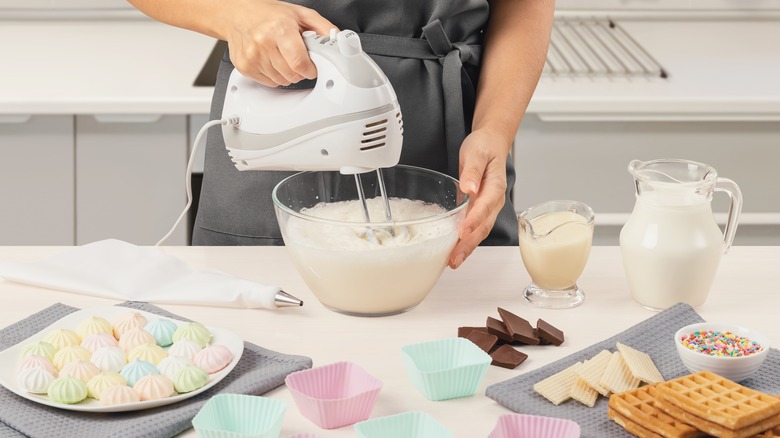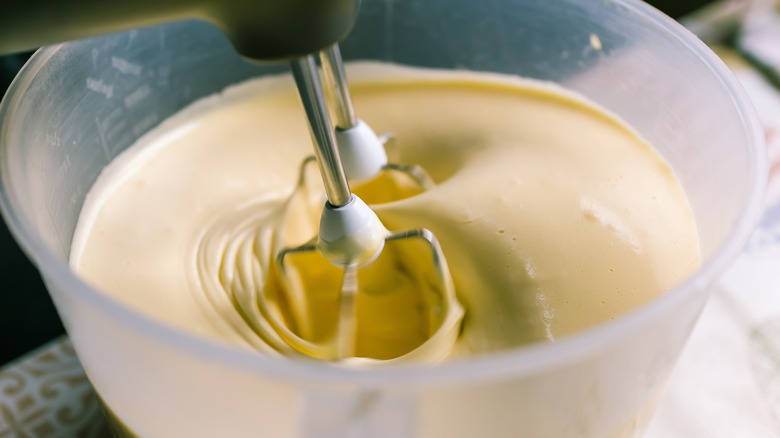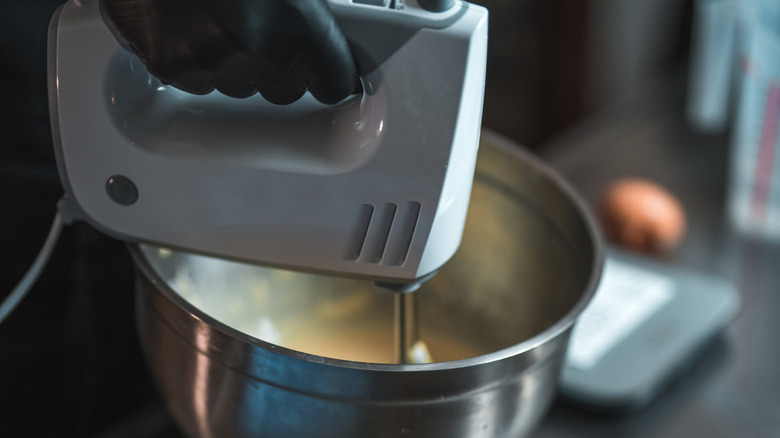Save Yourself From An Achy Wrist With A Simple Hand Mixer Hack
Hand mixers are affordable and efficient, which means they're a must in the kitchen for both cooking and baking. Despite their utility, you may have experienced discomfort when turning a hand mixer repeatedly to ensure ingredients are completely combined. To avoid future wrist pain, there's a smart and easy hack you can employ. While it's commonplace to turn the hand mixer as you blend different components, try turning the bowl instead. This technique is especially beneficial when mixing up particularly thick batters like bread dough, which can really put your wrist to the test.
While it can depend on the specific model, many hand mixers range from about two to four pounds, which might not seem like a substantial amount of weight. However, it can become quite unwieldy when you're tasked with holding the appliance for an extended period, especially when moving your wrist around repeatedly. By turning the bowl, you can keep the hand holding the mixer nice and steady, while exerting far less effort by spinning the bowl. Keep in mind that wrist pain and other issues are quite common among home cooks, which is why you must be meticulous about your technique.
How to avoid wrist discomfort in the kitchen
Cooking and baking seem like relatively subdued activities, but they can still put quite a bit of stress on the body. This is especially true for people who work in the kitchen frequently, as the use of hand mixers and other tools can lead to uncomfortable conditions like tendinitis and carpal tunnel. These ailments result from repetitive movements, which can put stress and strain on tendons and nerves.
Fortunately, you can sometimes avoid discomfort in the wrists and hands by using kitchen tools carefully. Some people find it helpful to increase counter height to lessen the strain on the wrists, which you can do by placing a bowl on multiple cutting boards when mixing. You can also ease up on your grip on the handle of the hand mixer to decrease tension in your hand, in addition to making sure your wrist is held in a neutral position to avoid straining it. In the event you do experience discomfort after mixing, use home remedies like the application of ice or heat, to soothe soreness.
Other essential hand mixing tips
While comfort is key when using a hand mixer, how you use this kitchen appliance can impact the outcome of your recipes. Understanding different speed settings is especially important, as using the wrong speed could result in a baking disaster. When whipping ingredients, as you would when making a meringue, use the medium-high or high setting. If you're creaming butter, set the mixer to medium, while low-medium is best for more substantial batter like cookie dough. As for the lowest setting, it should be used when combining wet and dry ingredients.
You should also avoid under- and over-mixing, both of which can foil an otherwise amazing recipe. Not mixing a batter well enough will leave some ingredients separate from the mix, which affects the texture and flavor of the finished baked goods. Conversely, over-mixing results in a rigid texture due to increased gluten formation. For the best results, mix the batter until all ingredients are fully incorporated, then cease mixing. In the event you must add ingredients in steps, it's perfectly fine to leave some unmixed until the end of the process. With these smart tips, you can ensure optimum quality and comfort when using your trusty hand mixer.


